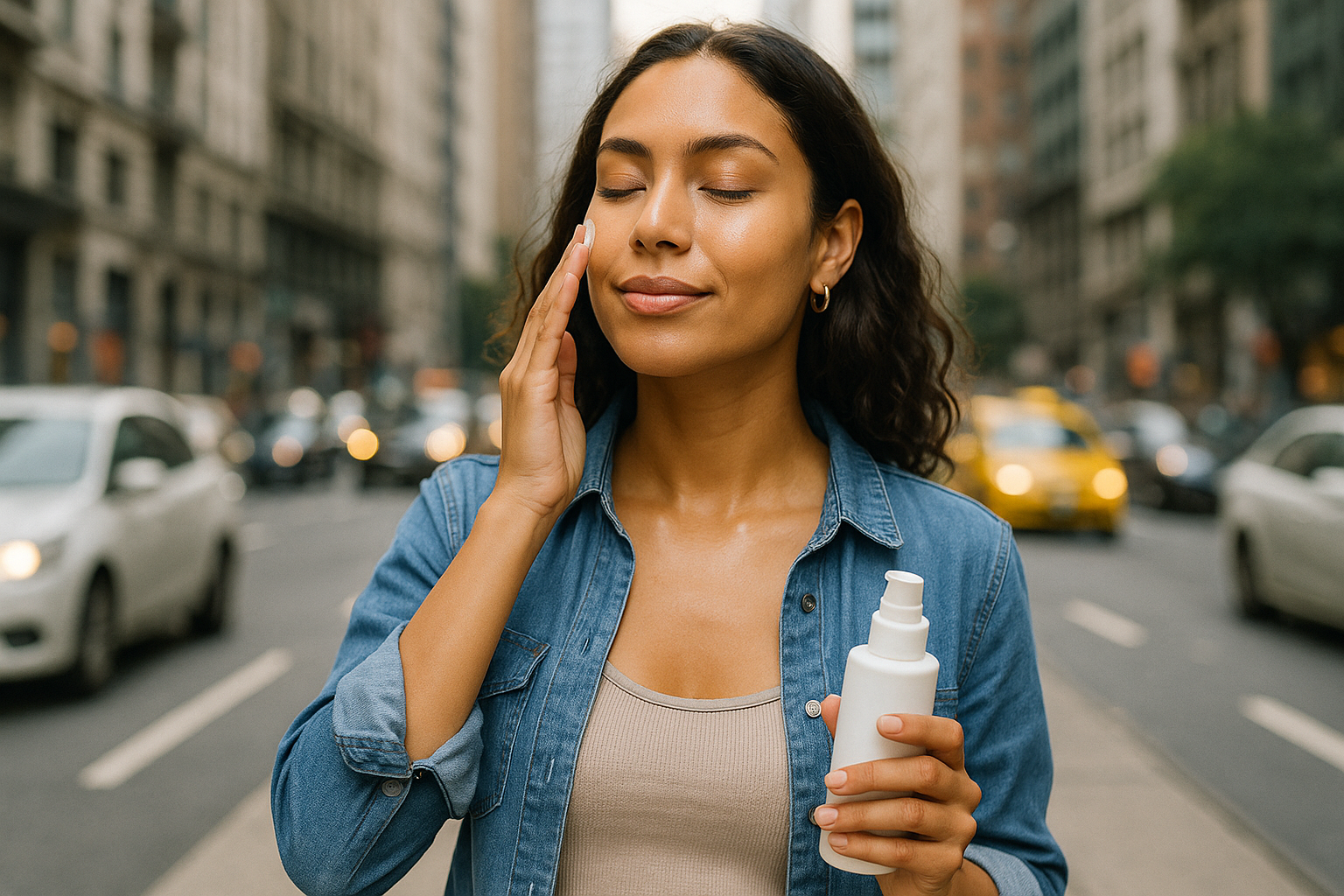In today’s fast-paced cities, we’re surrounded by pollutants — from vehicle emissions and industrial smoke to dust, UV radiation, and invisible toxins. Urban pollution doesn’t just impact our environment and health — it also takes a significant toll on our skin.
Daily exposure to pollution accelerates premature aging, dulls skin tone, clogs pores, and contributes to inflammation and sensitivity. Fortunately, with the right skincare routine and lifestyle choices, you can defend your skin against the harmful effects of pollution.
In this comprehensive guide, we’ll explore how urban pollution affects your skin, and how to build a skincare routine that acts like a protective shield.
How Pollution Affects Your Skin
Pollution particles — known as particulate matter (PM) — are tiny enough to penetrate the skin’s barrier. These particles carry toxins like heavy metals, hydrocarbons, and ozone, which trigger oxidative stress and inflammation.
Common Skin Issues Caused by Pollution:
- Premature aging (fine lines, wrinkles)
- Hyperpigmentation
- Dullness and loss of radiance
- Dehydration
- Clogged pores and breakouts
- Increased sensitivity and redness
Pollution doesn’t just sit on the surface; it goes deeper into pores, breaking down collagen and damaging the skin’s natural barrier over time.
Essential Strategies to Protect Your Skin from Pollution
Protecting your skin from urban pollution involves two main goals:
- Creating a barrier to prevent pollutants from entering.
- Detoxifying and repairing the skin from daily exposure.
Here’s how to do both effectively:
1. Start with a Deep, Yet Gentle Cleanse
Why it matters:
Cleansing removes pollution particles, dirt, and excess oil that build up throughout the day.
What to use:
- Micellar water or oil-based cleansers as the first step to break down pollutants.
- Gel or cream-based cleansers to remove residue without stripping the skin.
💡 Double cleansing at night is especially helpful in polluted environments.
2. Exfoliate Regularly (But Not Excessively)
Pollution can clog pores and leave the skin looking dull. Gentle exfoliation removes dead skin cells and helps maintain clarity.
Recommended frequency:
- 1–2 times per week for sensitive skin
- 2–3 times per week for oily or combination skin
Best exfoliants:
- Lactic acid
- Mandelic acid
- Enzymatic exfoliants (like papaya or pumpkin)
Avoid harsh scrubs that can damage the skin’s protective barrier.
3. Apply an Antioxidant-Rich Serum
Antioxidants neutralize free radicals caused by pollution. Including them in your morning routine helps defend your skin before exposure.
Top antioxidants to look for:
- Vitamin C: Brightens and shields against oxidative damage
- Niacinamide: Strengthens the skin barrier and reduces inflammation
- Ferulic acid: Enhances the effectiveness of other antioxidants
- Green tea extract: Calms and protects
Apply after cleansing and before moisturizer or sunscreen.
4. Use Barrier-Boosting Moisturizers
A strong skin barrier helps prevent pollution from entering deeper layers of the skin. Moisturizers with barrier-repair ingredients are essential.
Look for:
- Ceramides
- Squalane
- Panthenol (Vitamin B5)
- Shea butter
These help lock in moisture and reinforce the skin’s natural defenses.
5. Never Skip Sunscreen
Pollution and UV rays work together to accelerate aging and hyperpigmentation. A broad-spectrum SPF with PA+++ or higher is crucial.
Tips:
- Choose SPF 30 or above
- Reapply every 2–3 hours if outdoors
- Consider formulas with anti-pollution claims or mineral filters like zinc oxide
Some modern sunscreens now include anti-pollution complexes for added defense.
6. Detox with Nighttime Treatments
Night is when your skin enters repair mode. Use lightweight treatments that detoxify and soothe.
Suggested ingredients:
- Charcoal or clay masks (1–2x a week)
- Retinol or bakuchiol (stimulates collagen, repairs damage)
- Probiotics (helps rebalance skin microbiome)
Finish with a rich moisturizer or sleep mask to seal in hydration.
7. Build a Protective Lifestyle
Skincare alone isn’t enough. Your overall habits influence your skin’s resilience against pollution.
🥗 Eat an antioxidant-rich diet:
- Berries, leafy greens, tomatoes, and nuts support your skin from within.
💧 Stay hydrated:
- Drink plenty of water to help flush toxins and keep your skin plump.
🧘♀️ Manage stress:
- Chronic stress impairs the skin’s barrier function, making it more vulnerable to pollutants.
🪟 Improve indoor air quality:
- Use air purifiers, keep windows closed during high-traffic hours, and clean surfaces regularly.
Daily Anti-Pollution Skincare Routine
| Step | Morning | Evening |
|---|---|---|
| Cleanser | Gentle foaming or micellar | Double cleanse (oil + gel) |
| Toner (optional) | Hydrating with antioxidants | Soothing or balancing |
| Serum | Vitamin C, niacinamide | Retinol, peptides, or niacinamide |
| Moisturizer | Lightweight barrier cream | Rich, repairing formula |
| Sunscreen | SPF 30+ with anti-pollution | Not needed |
| Weekly Add-ons | – | Clay mask, exfoliator, sleep mask |
Common Mistakes to Avoid
❌ Skipping cleansing at night
Pollution particles left overnight can oxidize and damage your skin.
❌ Using harsh scrubs
They may give a temporary “clean” feel but damage the skin barrier long-term.
❌ Applying sunscreen only on sunny days
Pollution and UVA rays are present even on cloudy days.
❌ Not checking product labels
Avoid alcohol, sulfates, and parabens — they weaken skin defenses over time.
Conclusion: Let Your Skin Breathe, Even in the City
Urban life brings energy, culture, and connection — but also pollution. The good news is that your skin doesn’t have to suffer. By understanding how pollution affects your skin and adopting a skincare routine that protects, cleanses, and repairs, you can keep your skin healthy, resilient, and glowing no matter where you live.
Modern skincare offers powerful tools to guard against invisible aggressors — all you need is consistency and the right knowledge.
🛡️ Your skin is your first line of defense — treat it like the armor it is.
